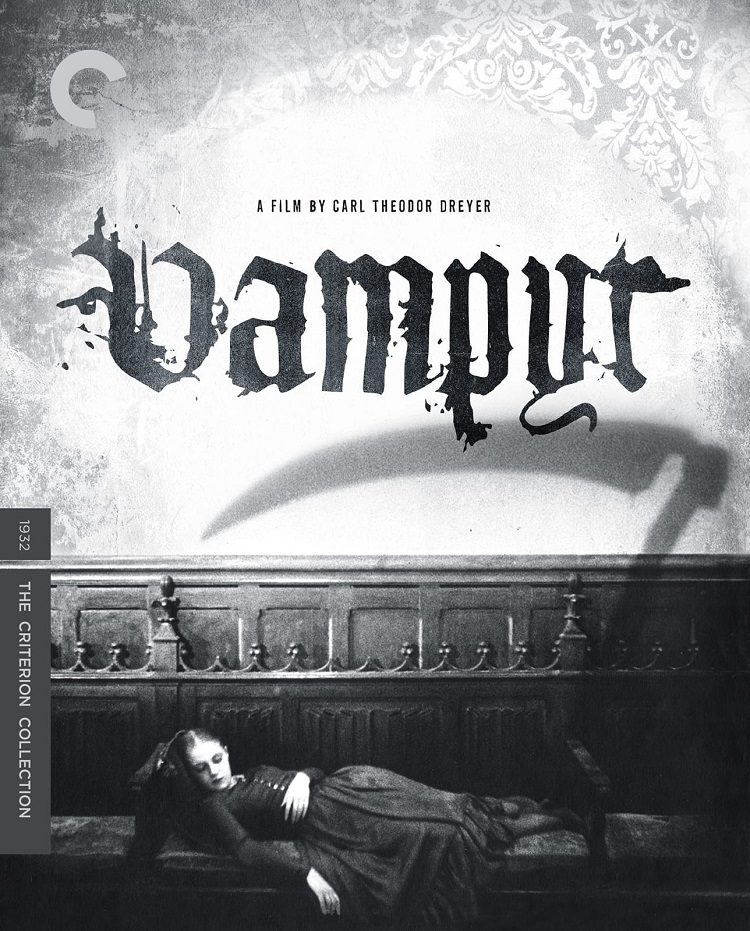
Although Vampyr was released way back in 1932, it isn’t the first vampire film, as it was released after the better-known Nosferatu and Dracula. It does have a fascinating production story though, perhaps more interesting than the film itself. The film was co-written and directed by Danish filmmaker Carl Theodor Dreyer, but due to the nearly non-existent Danish film industry he produced the film in France in German, French, and English languages. All audio was dubbed after filming, but Dreyer filmed all dialogue scenes with his actors speaking in each of the three languages so that their mouth movements would match the dubbing. In spite of his catering to multiple audiences, the film was a box-office failure, leading to Dreyer’s retreat from the director’s chair for over a decade. The film was overlooked for many years, and wasn’t well preserved, leading to multiple restoration efforts to produce the film in its current form. The English version appears to have vanished completely, leaving the German version as the primary basis for this release.
The story focuses on a well-dressed drifter named Allan who is fascinated by the supernatural, travelling around the countryside in search of unexplainable phenomena. When he takes up lodging at a remote inn, he stumbles upon a neighboring estate where a tragically ill teen girl is slowly becoming a vampire. He hits the motherlode here to fuel his obsession, as he finds odd peripheral characters, scary shadows, and the prime vampire attraction. The film excels at spooky photography, with particularly effective use of shadows, but little else. Dreyer fails to explain why the complete stranger Allan is welcomed at the estate, why inconsequential characters are included at all, and why nobody but Allan seems concerned about the weird circumstances. Ultimately, Vampyr is mostly worthwhile as a historical document of an interesting time and place in filmmaking, but it fails as a compelling or even comprehensible film.
Both the original camera negative and all three sound negatives have been lost to time, so this version of the film was cobbled together from the best surviving parts of original German and French prints, with German soundtrack. Although extensive restoration efforts were made even before Criterion took their turn at cleaning it up, the film as it stands here is littered with scratches and debris, as well as occasionally shaky stabilization. The sorry technical condition of the film makes Blu-ray presentation largely overkill, however the disc is filled out with a sizable collection of bonus features as well as an alternate version of the film with English text.
The best bonus feature is a 2008 video essay by film scholar Casper Tybjerg discussing and examining Dreyer’s influences in creating Vampyr. The disc also includes a lengthy 1966 documentary chronicling Dreyer’s entire film career, featuring in-depth interviews with Dreyer where he discusses each of his films. It’s worth a watch, but really only for serious students of Dreyer’s work. Criterion also included a 1958 radio broadcast of Dreyer reading an essay about filmmaking, also only for the very dedicated fans. The standard booklet contains a couple of essays, an article about the film’s restoration, and a 1964 interview with producer and actor Nicolas de Gunzburg.
That’s only the standard booklet, because Criterion have outdone themselves by also including a separate 200+ page book called Writing Vampyr that includes a full copy of the screenplay by Dreyer and Christen Jul, as well as the novel Carmilla by Sheridan Le Fanu from his 1872 collection of supernatural tales called In a Glass Darkly, which served as the basis for Dreyer’s film. While Vampyr follows Allan’s outsider point of view, Carmilla is written from the stricken girl’s perspective, as she tries to understand her fate and her increasingly amorous relationship with the female vampire slowly corrupting her. The novel deceptively plays more like a lesbian love story than a supernatural thriller, shrewdly avoiding even the mention of vampires until its final act. Characters and motivations are well defined, and the story logically progresses to its satisfying conclusion, statements that I can’t really make about the scattershot Vampyr. Criterion are to be commended for including the full novel here, as it shows the fascinating work Dreyer borrowed from, and also stands as a story that is far more entertaining than the movie it spawned.